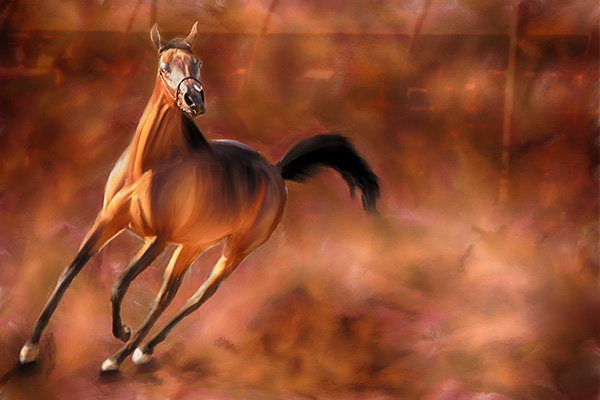
by successfulbob | fine art photography, photography, tuesday painterly photo art
Tuesday Painterly Photo Art – Stephen Moody – M.Photog.
I met Stephen through the Arizona Professional Photographers Association. I was fascinated and intrigued by his abstract images I became exposed to during the annual imaging competition. I started seeing more of his painterly work through Instagram and Facebook and asked him if he would like to share here on Successful-Photographer.
Stephen Moody’s Fine Art Portraiture
Stephen Moody has been a professional photographer for 35 years. He has been fortunate to photograph projects for international commercial clients as well as portrait clients.
“I must say that the joy of seeing my work printed in Vogue Magazine was a rush, as well as seeing my art images of Coca-Cola products hanging the halls of Swire Coca-Cola Headquarters. It was a feather in my cap,” says Moody. “But, seeing one of my fine art portraits hanging in a client’s home in the same room as their original Picasso is more than I ever imagined.”
 Arabian Horse – © Stephen Moody
Arabian Horse – © Stephen Moody
 Arabin Horse original capture – © Stephen Moody
Arabin Horse original capture – © Stephen Moody
Moody has been creating fine art portraits in one way or another since he started in business in the early 1980’s. Using AGFA 1000 RSX transparency film Moody created Impressionistic artwork in the camera and then used a tri-color printing method to create even more pointillism.
Today, he has taken it to an entirely elevated level. Moody’s clients do not hang photography in their homes. They have original art in their homes. Moody had to change his business model and develop his talents in the fine art of painting to create original artwork for his clients.
 “Biscotti” – © Stephen Moody
“Biscotti” – © Stephen Moody
 “Biscotti” before – © Stephen Moody
“Biscotti” before – © Stephen Moody
“Art In Its Most Human Form”™ was Moody’s transformation from photographer into an artist. His first show in Scottsdale, Arizona sold three paintings for $15,000 on opening night. These mixed media paintings were his first images to use photography, dyes, and acrylic paint together on one canvas.
His process starts with a photo shoot. After selecting an image, he creates a stunning image in Adobe Photoshop. The image is then painted in Corel Painter. “I have two styles that I offer to the client; Impressionistic and Classical,” shares Moody. “The style is chosen based upon the décor in the room where the artwork will be displayed.”
Stephen says, “In Painter, I only use a clone brush to bring in the image. Once I have a basic visual to work from I use brushes with paint, color and texture to finish my piece. I prefer to use brushstrokes that enhance the artwork as opposed to having my art look photographic.”
 “Claude” – © Stephen Moody
“Claude” – © Stephen Moody
 “Claude” before – wearing La Liberté Silk Tie & Scarf – designed by Stephen
“Claude” before – wearing La Liberté Silk Tie & Scarf – designed by Stephen
from the artwork “Art In Its Most Human Form”™
Once the digital artwork is printed on canvas, Moody breaks out his acrylic paints and brushes and begins to work on finishing the artwork. “This is the most important step of the entire process,” says Stephen. “As an artist, I feel it is important to do all of the work myself as this is what makes my style my own and, separates me from other artists and photographers. When you hire someone to do the artwork for you, it is their style that shows through in the artwork… and, if they are doing artwork for others, your work looks just like theirs.
Stephen shares, “I am always learning. There are many painter’s styles I love to emulate; Degas, Rodin, Sargent, Boldini, Cassatt and more. Studying their artwork has influenced me as an artist.”
 “Family Portrait at the Beach” – © Stephen Moody
“Family Portrait at the Beach” – © Stephen Moody
 “Family Portrait at the Beach” before – © Stephen Moody
“Family Portrait at the Beach” before – © Stephen Moody
“Many people know that I am a photographer as I have been doing this a long time. But the people who see my finished artwork hanging in a home or a business refer to me as an artist!” exclaims Moody.
To see more of Stephen’s work – http://StephenMoody.com – http://portraitartist.pet
Yours in Creative Photography, Bob
Save
Save
Save
Save
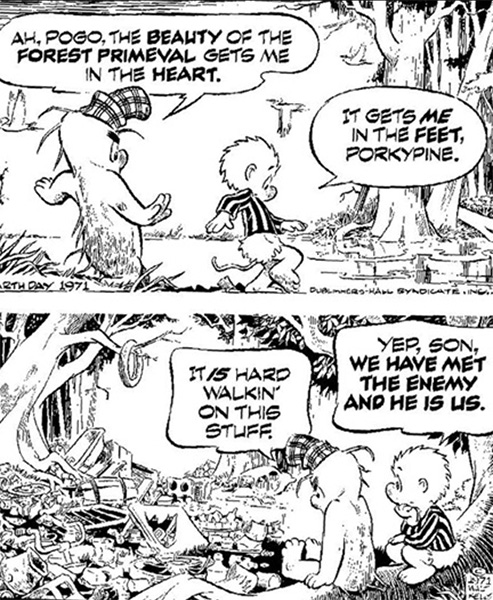
by successfulbob | photography - art quote, photography education, success education
Sunday Photo/Art Quote – Sun Tzu
Off down the road again I traipse again in this Sunday Photo/Art quote. This time, I turn to the Orient for inspiration. You wouldn’t think a guy who wrote the Art of War would be able to inspire us in our photographic art. But he can. The Art of war is traditionally ascribed to Sun Tzu. The book presents a philosophy of war for managing conflicts and winning battles.
No greater battle can there be than the ones that can rage within ourselves.
 “Can you imagine what I could do if I could do all I can?” Sun Tzu
“Can you imagine what I could do if I could do all I can?” Sun Tzu
I sometimes think we hold ourselves back. At the very least I know I sometimes do. We can be our worst enemies when it comes to heading for new horizons and starting or, dare I say, conquering new projects. That little voice inside can be a help or a hindrance in our quest to create new imagery. The voice can be our best cheerleader, or it can be the little nag that is always looking for, and sharing, the worst case scenario should you start to try something that is outside your regular wheelhouse.
I’ll not go into examples here. We all have those times when we’ve been held back by our fears. And, better yet, those times we’ve placed those concerns in the closet and overridden their dire predictions and accomplished so much more than we thought possible. Let’s try to do more of the latter.
It is a constant battle. Hence why I use Sun Tzu in this thought about art and our capabilities. He was one of the greatest strategists in waging war theory that ever lived. We can learn a lot from his words.
I’ll leave you with two last quotes.
“If you know the enemy and know yourself you need not fear the results of a hundred battles.” Sun Tzu
 “We have met the enemy and he is us.” From the comic strip Pogo
“We have met the enemy and he is us.” From the comic strip Pogo
With that, I’ll see you in the battlefields of creativity.
Yours in Creative Photography, Bob
Save
Save
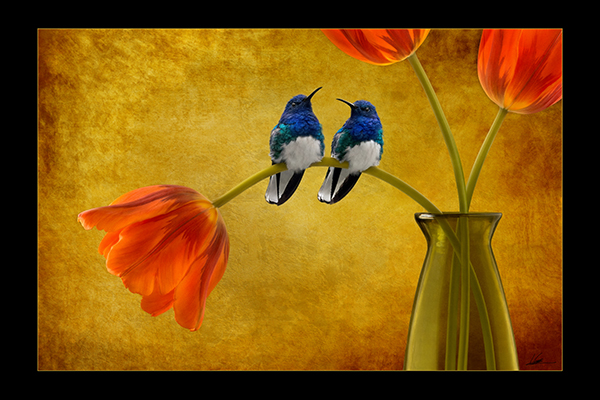
by successfulbob | imaging competition, photography, photography creativity, photography education, tuesday painterly photo art
Tuesday Painterly Photo Art
Karen Nakamura – M.Photog.,M.Artist
Judging gets you exposed to a lot of imagery. You can be critically thinking and talking about thousands of photographs over the course of a year. What is interesting is that there are some artists whose work seems to jump out from the rest showing something different. Judging is blind as far as knowing who the maker may be during the competition. At a later date a maker’s work may be seen with a name attached and I really enjoy talking with the maker and Karen was one of those people.
That’s why I asked her to join us on Successful-Photographer in this post. Here’s Karen!
How Karen learned
“I’ve been creating art pretty much as far back as I can remember. I’ve taken art classes since the 3rd grade. I’m really lucky because my mom would give us art projects throughout the year when I was little. I’ve taken everything from painting, drawing, sculpting, 2 and 3-dimensional design, photography, photoshop and industrial arts.”
 The Perfect Perch – I’ve been wanting to add birds to my floral images. I went to the San Diego zoo and photographed a beautiful White-necked Jacobin hummingbird. I then photographed the tulips to match the light on the bird and then photographed the vase.
The Perfect Perch – I’ve been wanting to add birds to my floral images. I went to the San Diego zoo and photographed a beautiful White-necked Jacobin hummingbird. I then photographed the tulips to match the light on the bird and then photographed the vase.
 The vase wasn’t exactly what I wanted so I decided to stretch it. The hummingbird was shot natural light at f13 1/160 800ISO Tulips and vase were shot with natural light with reflector. F11 1/60 160ISO
The vase wasn’t exactly what I wanted so I decided to stretch it. The hummingbird was shot natural light at f13 1/160 800ISO Tulips and vase were shot with natural light with reflector. F11 1/60 160ISO
Words of wisdom on learning and/or thoughts on creating art
“Anyone can create art. Just follow your heart. Don’t compare yourself to others and don’t care what others think. Create art that makes you happy because that’s what it’s all about. The more you create, the better you will become. Eventully you will develop your own style.”
 Orchid Bloom – I’ve had this orchid for about five years. The plant sits on my kitchen cabinet and when the window light hits the flowers, the colors are so striking. The orchid spray wasn’t perfect so I added one more flower to the stem. The leaves were taken from another orchid image to complete my piece.
Orchid Bloom – I’ve had this orchid for about five years. The plant sits on my kitchen cabinet and when the window light hits the flowers, the colors are so striking. The orchid spray wasn’t perfect so I added one more flower to the stem. The leaves were taken from another orchid image to complete my piece.
 The orchid spray was shot in a studio setting with one main light and one reflector. @ f16 1/125 100 ISO The orchid plant was natural window light with a reflector. F11 1/60 400ISO
The orchid spray was shot in a studio setting with one main light and one reflector. @ f16 1/125 100 ISO The orchid plant was natural window light with a reflector. F11 1/60 400ISO
“To be inspired look at other peoples art, look at art history books and go onto social media sites like pinterst and instagram. Follow artists that inspire you. To learn how to create art, watch videos on Youtube or watch videos on site like Creative Live. Hands on classes and workshops are one of the best ways to learn a techique.”
 Delicate Beauty – The freesia is one of the first flowers I photographed back in 2012. I really didn’t like how it came out, so I set it aside until I went to the Natural History Museum in Los Angeles and photographed a Swallowtail hovering over flowers. I didn’t know what I wanted to do with my butterfly images until I went back into my library of flowers and came across the freesias again. Visually the light matched so I decided to play around with the three subjects until I created this art piece.
Delicate Beauty – The freesia is one of the first flowers I photographed back in 2012. I really didn’t like how it came out, so I set it aside until I went to the Natural History Museum in Los Angeles and photographed a Swallowtail hovering over flowers. I didn’t know what I wanted to do with my butterfly images until I went back into my library of flowers and came across the freesias again. Visually the light matched so I decided to play around with the three subjects until I created this art piece.
 The butterflies were shot in diffused sunlight f8 1/1600 800 ISO. The freesia was studio lit with one main light, one reflector and a backlight. f16 1/125 100ISO
The butterflies were shot in diffused sunlight f8 1/1600 800 ISO. The freesia was studio lit with one main light, one reflector and a backlight. f16 1/125 100ISO
Karen Nakamura Bio
PPA Master Photographer and Master Artist, Karen Nakamura, is widely acclaimed for her signature style images of flowers. She is gifted with a unique take on them that evolves with each new blossom she shoots. Some of her inspiration and creativity comes from an adoration of orchids, which she tended to as a hobby.
Karen also has a fine art background, attaining her Bachelor’s of Fine Art from Cal State Long Beach.
Karen has earned the Professional Photographers of America’s Photographer of the Year awards every year since she first entered the PPA International Photographic Competition back in 2010.
Professional Photographers of America honored Karen with its 2013 Diamond Photographer of the Year and 2014 Artist Diamond Photographer of the Year. Diamond Photographers of the Year had all four competition images accepted into the prestigious PPA Loan Collection. Karen has won the coveted Canon Par Excellence Award, representing the pinnacle of achievement at the Professional Photographers of America regional level. She is one of the first photographers to earn the California Masters Degree from Professional Photographers of California.
You can learn from Karen! Her PPA Super 1 Day Class
Floral Photography and Compositing Course Date: Thursday, October 6, 2016
PPA Super One Day Class
Check out more of Karen’s work – www.karennakamuraphotography.com
Hope you enjoyed Karen’s work!
Yours in Creative Photography, Bob
Save
Save
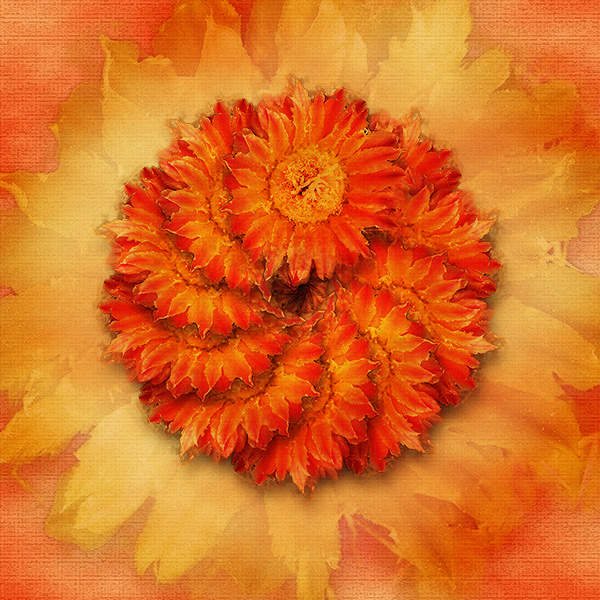
by successfulbob | Lumix Lounge, Lumix LX100, photography, photography creativity, photography gear, photography lighting resources
Using a Mini-Scrim for Better Photos
A very simple way to control light is through the use of a scrim. For small subjects and objects, a regular 42-inch round scrim or super size scrims of 60 inches or more can be a bit of overkill for just mucking about. Westcott makes a wonderfully portable sized, five-in-one that is only twenty inches and when folded in it’s carrying case is a tiny eight inches for about twenty bucks.
Here’s a quick example using a neighbor’s cactus that was showing some attractive color blossoms. Look carefully at the difference between photos and I think you’ll see that learning to use a scrim can help get you better lighting in your images.
 This first image was captured with full sun as the light source. Colors are bright and you might think that this works. Look at the harsh, deep dark patches in the shadow with no detail. This is the same kind of look you will get if you use on-camera flash.
This first image was captured with full sun as the light source. Colors are bright and you might think that this works. Look at the harsh, deep dark patches in the shadow with no detail. This is the same kind of look you will get if you use on-camera flash.
 In order to tame the harsh shadows, I next captured the blooms in full shadow. This results in slightly less contrast and the color has become muted. I suppose the color could be pumped up in post-production but the shadow are still a bit blocked up.
In order to tame the harsh shadows, I next captured the blooms in full shadow. This results in slightly less contrast and the color has become muted. I suppose the color could be pumped up in post-production but the shadow are still a bit blocked up.
 Here a scrim was placed between the sun and subject. Even though the scrim is only twenty inches because of it’s close proximity to the flowers it is acting like a very large light source. Very nice overall light with soft shadows and color fidelity. All images were processed with the same settings straight out of the camera. (SOOC)
Here a scrim was placed between the sun and subject. Even though the scrim is only twenty inches because of it’s close proximity to the flowers it is acting like a very large light source. Very nice overall light with soft shadows and color fidelity. All images were processed with the same settings straight out of the camera. (SOOC)
 A quick grab of the scrim in action. In addition, the kit comes with four other surfaces to reflect or block light in various intensities and colors. Black, gold, silver and white can all also be used to bend light to your will.
A quick grab of the scrim in action. In addition, the kit comes with four other surfaces to reflect or block light in various intensities and colors. Black, gold, silver and white can all also be used to bend light to your will.
You can take this same lesson and apply it to larger subject such as people by using a larger scrim. Practice with it and you will find the larger the scrim and the distance it is to your subject you will be able to control the shadow edge transitions and depth of the shadow on your subject. Moving it further away while still covering your subject will give you slightly stronger shadows. Conversely, the scrim closer will make the light softer.
 Sometimes you just gotta play! NIK filters, Photoshop extraction’ Layers and the Transform Tool.
Sometimes you just gotta play! NIK filters, Photoshop extraction’ Layers and the Transform Tool.
These photos were captured with the Lumix LX100 the camera I call the ‘Pro’s Point & Shoot.’ A solid little performer built on a magnesium frame for about $700.
Yours in Creative Photography, Bob
Save
Save
Save
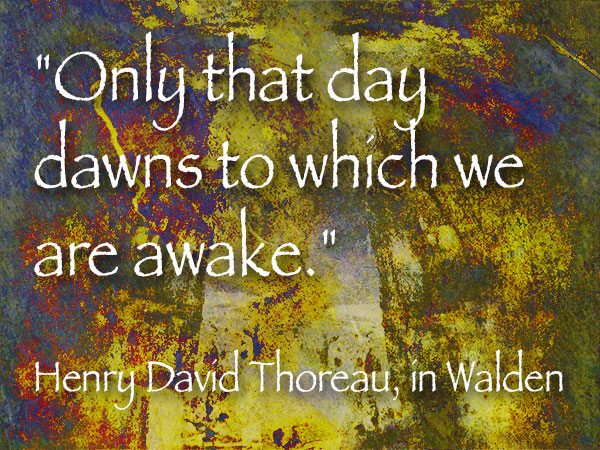
by successfulbob | inspiration, photography, photography - art quote, photography education, success education
Sunday Photo/Art Quote – Henry David Thoreau
Sometimes I head a little far afield of even the art world when I choose the quotes for this Sunday morning art thought.
Today is one of those days.
But I’ll bring it around. I promise.
Walden by Thoreau is an interesting read and his sharing of thoughts on slowing down and observing the world in which we hang out in real time and that it is a good idea. You don’t have to take as much time as he did, but you can slow down and observe for small chunks of time.
I find it quite helpful. On to today’s quote, so we are on the same page.
 “Only that day dawns to which we are awake.” Henry David Thoreau
“Only that day dawns to which we are awake.” Henry David Thoreau
I share this idea today because I find many people, including myself, often living in the past or the future instead of the present. Don’t believe me? Ever drive home and then wonder how you got there? In the shower do you feel the water cascading from your head down your body and hear the musical splashing of the drops onto the floor? Or, are you on auto-pilot missing these moments and planning what you should be doing after you get to work? Or are you wallowing in the past upset with something someone said and replaying that conversation over and over ad nauseum??
Other examples abound. Reading and not know what you’ve read moments later. Shaving your face and missing the whole left side. Brushing your teeth and not knowing whether you’ve done the top inside yet. You get the idea.
We can become better creators if we learn to be in the present and learn to observe more. See more details, Retain more of those details. For help with seeing more and recalling what you see, you might want to try Amy Herman’s book Visual Intelligence. It’s a guide to visual understanding and communicating more clearly. Her book is based on a course for law enforcement, such as the FBI, police officers and CEO’s, ER professionals to become more observant.
Getting control of our thoughts is the first step. Slowing the constant cascade of the unstructured noise that our brains are capable of generating. Meditation can be of tremendous help in quieting the mind. I recommend Jon Kabat-Zinn and his book Wherever You Go There You Are. He also has a set of guided meditations that are wonderful as you start down the road of being in the here and now. Mindfulness Meditations.
Hope you enjoy this reading list. I hadn’t intended to go this deep. Sometimes writing can lead you to a rabbit hole, and the exploration can take you to interesting places. Just ask Alice.
Yours in Creative Photography, Bob
PS – Here’s the tie in. When you see better and remember what you see you can be a better creator of images. Happy reading!
 Walden by Henry David Thoreau
Walden by Henry David Thoreau
 Visual Intelligence – Amy E. Herman
Visual Intelligence – Amy E. Herman
 Wherever You Go There You Are – Jon Kabat-Zinn
Wherever You Go There You Are – Jon Kabat-Zinn
Save
Save
Save

 Arabian Horse – © Stephen Moody
Arabian Horse – © Stephen Moody Arabin Horse original capture – © Stephen Moody
Arabin Horse original capture – © Stephen Moody “Biscotti” before – © Stephen Moody
“Biscotti” before – © Stephen Moody “Claude” before – wearing La Liberté Silk Tie & Scarf – designed by Stephen
“Claude” before – wearing La Liberté Silk Tie & Scarf – designed by Stephen “Family Portrait at the Beach” – © Stephen Moody
“Family Portrait at the Beach” – © Stephen Moody “Family Portrait at the Beach” before – © Stephen Moody
“Family Portrait at the Beach” before – © Stephen Moody


























